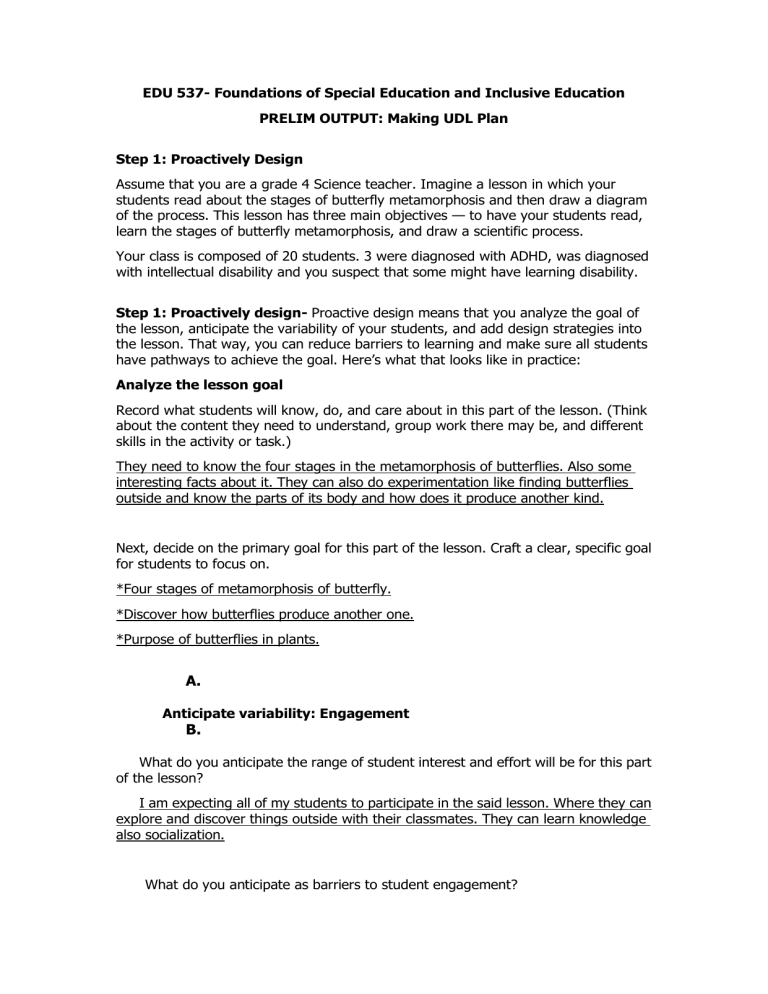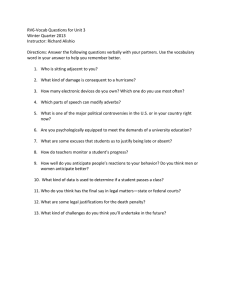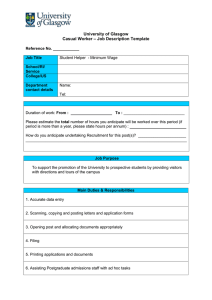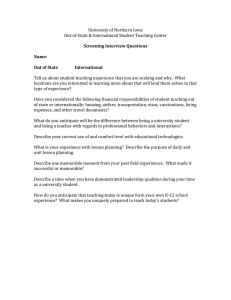Butterfly Metamorphosis: UDL Lesson Plan for Grade 4
advertisement

EDU 537- Foundations of Special Education and Inclusive Education PRELIM OUTPUT: Making UDL Plan Step 1: Proactively Design Assume that you are a grade 4 Science teacher. Imagine a lesson in which your students read about the stages of butterfly metamorphosis and then draw a diagram of the process. This lesson has three main objectives — to have your students read, learn the stages of butterfly metamorphosis, and draw a scientific process. Your class is composed of 20 students. 3 were diagnosed with ADHD, was diagnosed with intellectual disability and you suspect that some might have learning disability. Step 1: Proactively design- Proactive design means that you analyze the goal of the lesson, anticipate the variability of your students, and add design strategies into the lesson. That way, you can reduce barriers to learning and make sure all students have pathways to achieve the goal. Here’s what that looks like in practice: Analyze the lesson goal Record what students will know, do, and care about in this part of the lesson. (Think about the content they need to understand, group work there may be, and different skills in the activity or task.) They need to know the four stages in the metamorphosis of butterflies. Also some interesting facts about it. They can also do experimentation like finding butterflies outside and know the parts of its body and how does it produce another kind. Next, decide on the primary goal for this part of the lesson. Craft a clear, specific goal for students to focus on. *Four stages of metamorphosis of butterfly. *Discover how butterflies produce another one. *Purpose of butterflies in plants. A. Anticipate variability: Engagement B. What do you anticipate the range of student interest and effort will be for this part of the lesson? I am expecting all of my students to participate in the said lesson. Where they can explore and discover things outside with their classmates. They can learn knowledge also socialization. What do you anticipate as barriers to student engagement? I think the barriers is the disability of some of my learners. Those who were diagnosed with ADHD, diagnosed with intellectual and learning disability. And also environmental barriers like outdoor games, people and vehicles. What one or two design strategies can you include in your lesson to increase engagement? *Collaboration *Learning through exploration and discovery. A. Anticipate variability: Representation B. What do you anticipate the range of student background experience, vocabulary, and perception will be for this part of the lesson? Students doesn’t have enough knowledge about the said topic. But they can supply simple information about it. They can learn and understand the lesson properly as long as they eager to know what about the topic is. What do you anticipate as barriers to student comprehension? *Inaccurate or slow identification of words. *Limited vocabulary. *Lack of prior knowledge of content. *Failure to attend to text structures for clues What one or two design strategies can you include in your lesson to increase options for representation? * Providing options for representation *Creative and idealistic material use A. Anticipate variability: Action and expression B. What do you anticipate the range of student action and expression will be for this part of the lesson? They might enjoy exploring butterflies and they will open their minds and curiosity about something that is unusual and unfamiliar unto them. What do you anticipate as barriers to students demonstrating what they know? *Lack of self-confidence *Having anthropophobia (fear of people) *Lack of communication skill What one or two design strategies can you include in your lesson to increase options for action and expression? *Provide options for how students express what they have learned. *Allow multiple formats for demonstrating knowledge, oral or written. *Incorporate a variety of assessment formats. PABLYN MAE ESCONEBRA B1-02 COED4


